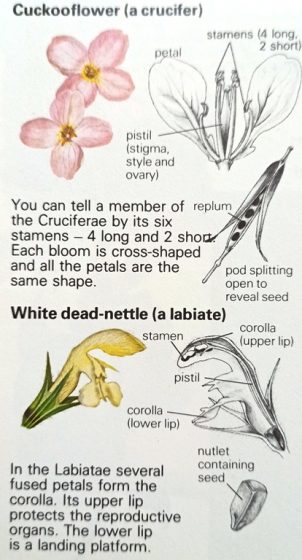Fruits: The seed pod, like all fruits, develops after fertilization of the ovules which lie in the center of the flower. As the pod swells, the seeds ripen until they are ready to be shed. The pod usually splits into two from the base upwards, leaving the seeds attached to a papery white membrane, the replum. The ‘moons’ of honesty are particularly resplendent examples.
Cruciferae is rich in glucosinates, a sulfur-containing group of molecules. Sinigrin is the most abundant glucosinate found in garlic mustard. It acts as a feeding or ovipositor stimulant for various insect species.
/ month
placeholder text
Post List
Editor's Picks
Four Corners Monument – Where Four Different States Meet
The stunning Four Corners Monument is the only place...
Movers and Packers: How to Ensure Safe and Secure Transportation of Your Belongings
Movers and Packers: How to Ensure Safe and Secure...
Tham Khoun Cave – Incredible Hidden Cave in Lao’s
Several Tourists know, that Laos is a popular tourist...
Mount McKinley – Highest Mountain Peak in North America
Mount McKinley is the highest peak in North America,...
11 Cruising Tips for First Timers
11 Cruising Tips for First Timers
With air travel not...
Oresund Bridge: Connects Denmark and Sweden
The engineering marvel of the Oresund Bridge has made...
Suspended Tents Offer More Versatility to Sleep Among Trees
Without any fears, the latest Models of Suspended Tents...
Don't Miss
The Benefits of Barley
Humanity has been availing the Benefits of Barley for...
Lily Flower Information: Discover the Breathtaking Beauty in Every Shape and Color
Lily flower information you should know before planting it....
Experience the Magic of Lake MacDonald: Australia’s Best-Kept Secret
There is an ephemeral lake called Lake Macdonald that...
The Hilltop Town of Civita di Bagnoregio
The lovely Civita di Bagnoregio is a small Italian...
Tennessee warbler “Vermivora peregrine”
IDENTIFICATION
The Tennessee warbler “Vermivora peregrine” is a medium size,...
Jean Hilliards: Unbelievable Story of Frozen Ordeal has a Happy Ending
This is an unbelievable story of the frozen ordeal...
Layers of Glass Form 3D Landscapes and Seascapes
Layers of Glass Form 3D Landscapes and Seascapes. Lucie...
Charismatic Planet © 2024 . All Rights Reserved.








